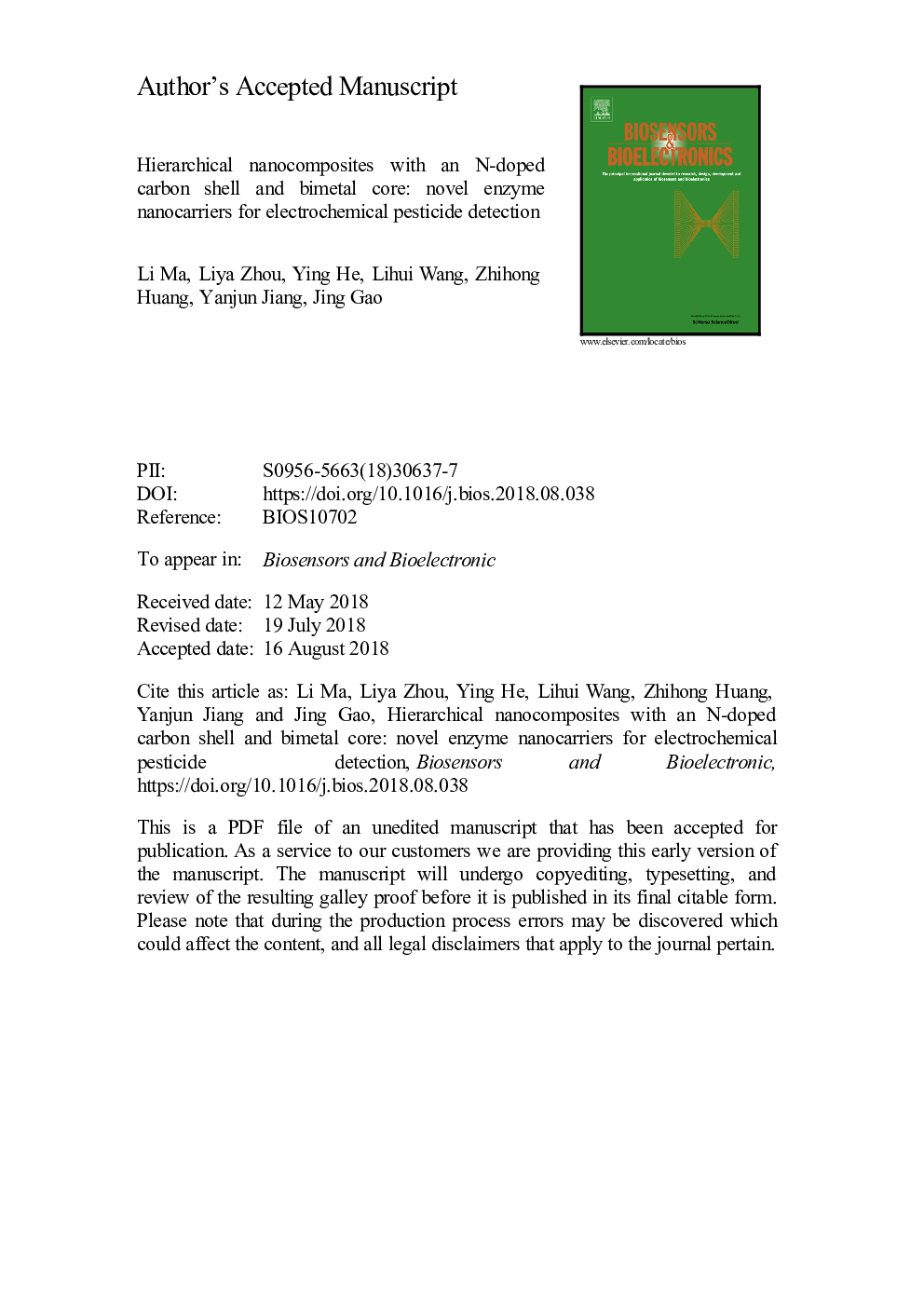| Article ID | Journal | Published Year | Pages | File Type |
|---|---|---|---|---|
| 10146983 | Biosensors and Bioelectronics | 2018 | 33 Pages |
Abstract
Core-shell structured nanocomposites (named PtPd@NCS) with N-doped carbon shell and bimetal core (Pt and Pd) were fabricated through a facile strategy for the first time. The PtPd@NCS nanocomposites were obtained through reduction of K2PtCl4, H2PtCl6 and Na2PdCl4 species, self-polymerization of dopamine (DA) and co-assembly of Pluronic F127 using a one-pot approach. DA serves as a reductant, as well as a carbon and nitrogen source. The core-shell structure of the PtPd@NCS nanocomposites was characterized and the result indicated that Pt-Pd nanoparticle core with a diameter of approximately 15â¯nm was encased in the N-doped carbon shells with a thickness of approximately 35â¯nm. The PtPd@NCS nanocomposites were used as an electrode material to prepare acetylcholinesterase (AChE) biosensors for detecting organophosphate pesticides. The obtained AChE biosensor exhibited a linear range of 1â¯Ãâ¯10-14 to 1â¯Ãâ¯10â10 M and 1â¯Ãâ¯10â9 to 1â¯Ãâ¯10â5 M within the detection limit of 7.9â¯Ãâ¯10-15 M for malathion, 1â¯Ãâ¯10-13 to 1â¯Ãâ¯10â6 within the detection limit of 7.1â¯Ãâ¯10-14 M for chlopyrifos, and 1â¯Ãâ¯10-14 to 1â¯Ãâ¯10-11 M and 1â¯Ãâ¯10â10 to 1â¯Ãâ¯10â5 M within the detection limit of 8.6â¯Ãâ¯10-15 M for parathion methyl. The proposed biosensor also exhibited high selectivity, reproducibility and stability. The AChE biosensor was also applied in real samples for detecting organophosphate pesticides and exhibited acceptable recovery. This work demonstrated that the PtPd@NCS had great potential in constructing biosensors to detect organophosphate pesticides and other analytes.
Related Topics
Physical Sciences and Engineering
Chemistry
Analytical Chemistry
Authors
Li Ma, Liya Zhou, Ying He, Lihui Wang, Zhihong Huang, Yanjun Jiang, Jing Gao,
